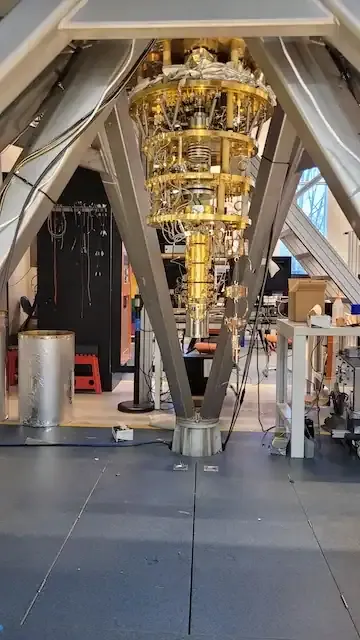
Groundbreaking Experiment Uses Levitated Magnets to Unravel the Mysteries of Dark Matter
2025-07-28
Author: Daniel
Unlocking the Secrets of Dark Matter with Cutting-Edge Technology
In an exciting leap forward, physicists from Rice University and Leiden University are harnessing the power of magnetic levitation to probe the enigma of dark matter. Their innovative experiment is the first of its kind to apply this technology in the quest to detect the elusive substance that supposedly constitutes a majority of the universe's mass.
Despite not having captured any dark matter signals yet, the researchers believe their work lays a critical foundation for future breakthroughs. Postdoctoral researcher Dorian Amaral, who co-led the project, emphasized, “By demonstrating what current technology can achieve, we pave the way for a promising new experimental journey to solve one of physics' greatest mysteries.”
The Unseen Universe: What We Know About Dark Matter
Dark matter remains one of the most profound mysteries in science. Although we infer its presence through gravitational effects, its exact nature remains largely speculative. Scientists estimate dark matter's mass could range dramatically—from minuscule particles to several times that of our Sun—suggesting a staggering 90 orders of magnitude in possible mass scales.
The B–L Model: A New Frontier in Dark Matter Research
A significant theoretical framework guiding current research is the ultralight dark matter (ULDM) model, which suggests various candidates like axions and vector particles. The Rice-Leiden team specifically concentrated on vector particles that could interact based on baryon (B) and lepton (L) numbers, aiming to unveil the hidden forces behind these so-called dark interactions.
Revolutionary Techniques for Detection
eschewing traditional detection methods, the team opted for an unconventional approach using superconducting traps and levitated magnets via the Meissner effect. Amaral noted, “Levitated magnets serve as exceptional sensors for detecting the minute signals expected from ULDM. They operate at ultralow temperatures, significantly reducing thermal noise compared to optical detectors. This makes them more sensitive and capable of levitating larger objects.”
Their experimental setup, dubbed POLONAISE (Probing Oscillations using Levitated Objects for Novel Accelerometry In Searches of Exotic Physics), involved suspending a tiny neodymium magnet within a superconducting trap cooled to nearly absolute zero. This precise configuration allowed the researchers to detect incredibly subtle motions that could provide the first tangible evidence of ultralight dark matter.
Collaboration Born from Unlikely Circumstances
The collaboration between these two institutions blossomed from a chance meeting at a climate protest. Tunnell, feeling the need to innovate after years of searching for dark matter without success, and Oosterkamp, focused on integrating quantum technologies into fundamental physics, connected over their shared drive to explore new scientific horizons. Amaral recalls, “We spent a year bridging our experimental and theoretical perspectives, stepping outside our comfort zones, but it was worth it.”
A Step Forward, Even Without Detection
Though the team did not detect dark matter, their findings are invaluable. Amaral concludes, “Not finding dark matter is still significant—it helps inform us about what dark matter is not. It’s like searching a room for a lost object; every clue narrows down your search.” With each experiment, the quest to uncover the true nature of dark matter continues, pushing the boundaries of our understanding of the universe.




 Brasil (PT)
Brasil (PT)
 Canada (EN)
Canada (EN)
 Chile (ES)
Chile (ES)
 Česko (CS)
Česko (CS)
 대한민국 (KO)
대한민국 (KO)
 España (ES)
España (ES)
 France (FR)
France (FR)
 Hong Kong (EN)
Hong Kong (EN)
 Italia (IT)
Italia (IT)
 日本 (JA)
日本 (JA)
 Magyarország (HU)
Magyarország (HU)
 Norge (NO)
Norge (NO)
 Polska (PL)
Polska (PL)
 Schweiz (DE)
Schweiz (DE)
 Singapore (EN)
Singapore (EN)
 Sverige (SV)
Sverige (SV)
 Suomi (FI)
Suomi (FI)
 Türkiye (TR)
Türkiye (TR)
 الإمارات العربية المتحدة (AR)
الإمارات العربية المتحدة (AR)